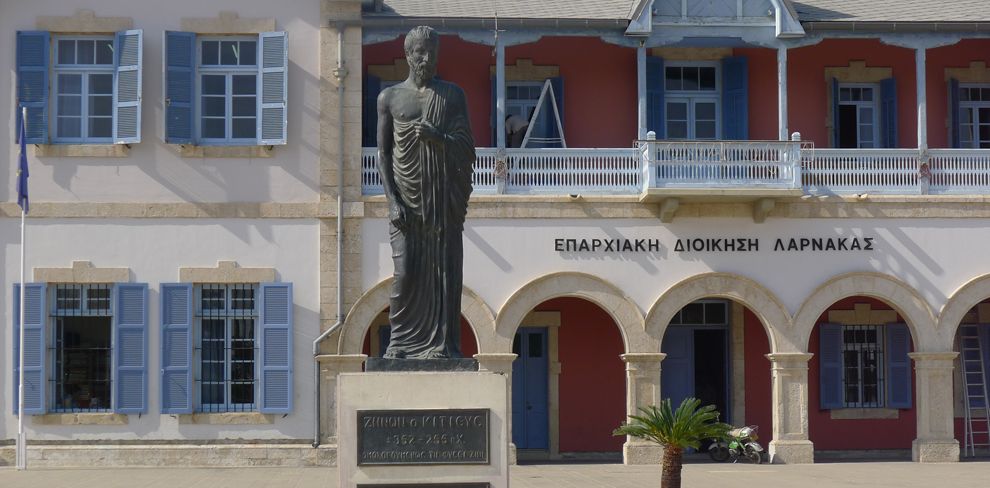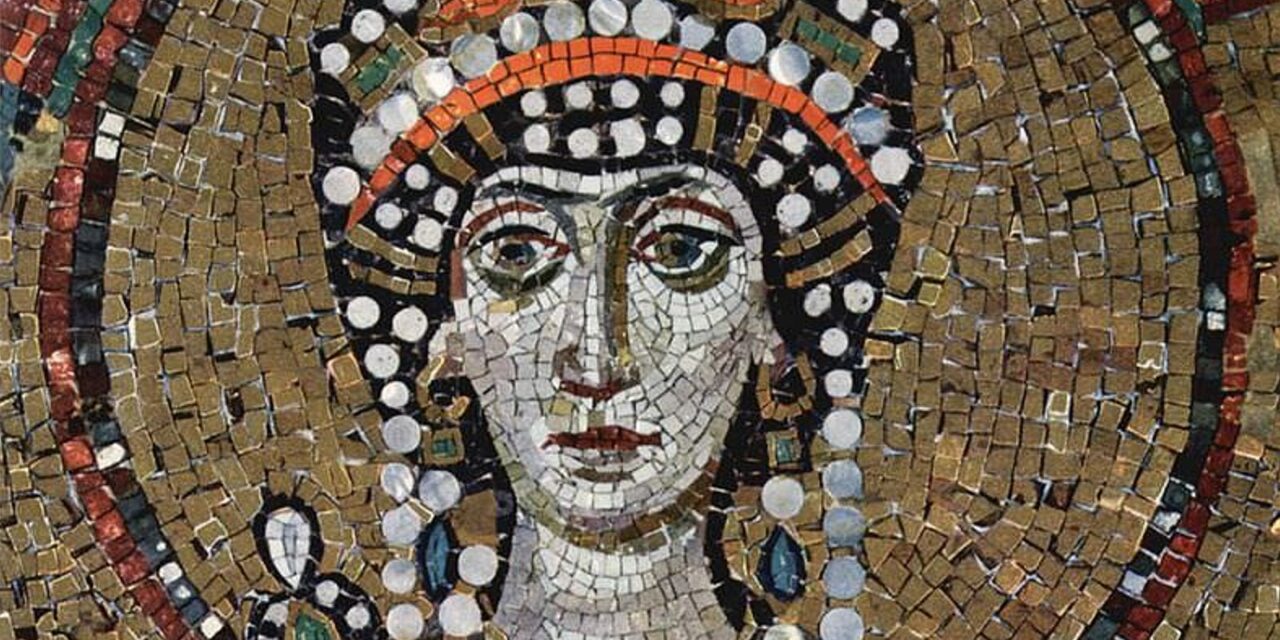Nicosia, the largest city in Cyprus, is home to nearly 30% of the country’s total population.
Cyprus History
Cyprus boasts a rich, complex history spanning over 9,000 years. Over the centuries, various civilizations, including the Mycenaeans, Assyrians, Persians, and Romans, have inhabited the island, each leaving a lasting mark on its culture and architecture.
Archaeological Sites
Kourion Archaeological Site – Situated on the southwestern coast of Cyprus, Kourion is one of the island’s largest and most remarkable archaeological sites. Dating back to the 10th century BCE, it boasts ancient theaters, temples, and tombs.
Tombs of the Kings – Found on the southern coast near Nea Paphos, this ancient city dates to the 4th century BCE, featuring palaces, temples, and tombs.
Aphrodite’s Rock – On the southern coast, Aphrodite’s Rock is a breathtaking site dating back to the 6th century BCE. It is dedicated to the goddess Aphrodite and includes ancient temples and altars.
Choirokoitia Archaeological Site – Located in southeastern Cyprus, Choirokoitia is one of the oldest sites on the island, dating back to around 7,000 BCE, and includes ancient houses and tombs.


Socioeconomic Analysis
Social Changes
Gender Equality: Over the decades, Cyprus has seen significant strides in gender equality, with increased participation of women in the workforce, politics, and education.
Cyprus ranks 13th among all EU Member States in the domain of salary gap with a score of 83.1 points.
Urbanization: The shift from rural to urban living has dramatically transformed Cypriot society. With more people moving to cities, there has been a decline in traditional agricultural practices, replaced by modern industries and services.
Cultural Integration: As Cyprus becomes more globalized, there has been a blending of traditional Cypriot culture with international influences, particularly in the arts, cuisine, and daily life.
Economic Development
Tourism Growth: Tourism has been a cornerstone of Cyprus’s economy, with the island’s sunny beaches, historical sites, and culture attracting millions of visitors each year.
Financial Services: Cyprus has developed a strong financial services sector, becoming a regional hub for banking, insurance, and investment. The country’s favorable tax regime and EU membership have attracted international businesses.
Agriculture to Services: Historically an agricultural economy, Cyprus has transitioned towards a service-oriented economy. Although Agriculture represents the 3.8% of Cyprus Economy, it still plays a role, particularly in exports like citrus fruits and olives.
Economic Challenges: Despite growth, Cyprus has faced economic challenges, including the 2013 banking crisis, which led to significant reforms in the banking sector. Thankfully recovery efforts have focused on diversifying the economy and increasing resilience to global economic shocks.
Currently, the unemployment rate stands at about 4.4%, with the GDP reaching approximately $34 billion.
Diaspora and Immigration
Diaspora Communities: Cyprus has a significant diaspora, with large communities in the United Kingdom, the United States, Australia, and Greece. These communities maintain strong ties to their homeland, contributing to Cyprus through remittances, cultural exchange, and political advocacy.
Many Cypriots migrated to the UK in the 1950s and 1960s for economic reasons, but many also fled, leaving their island country behind after the Turkish invasion of 1974.
Immigration Trends: In recent years, Cyprus has experienced increased immigration, particularly from Eastern Europe, the Middle East, and Southeast Asia. These immigrants have played a crucial role in various sectors, including construction, domestic work, and tourism.
Political Evolution
European Union Membership: Cyprus joined the European Union in 2004, which has significantly influenced its political and legal framework. Through various EU-funded programs, Cyprus receives substantial funding for scientific research, helping local researchers collaborate with international peers, access cutting-edge technology, and contribute to innovative projects across multiple disciplines.
The Cyprus Conflict: The division of the island in 1974 following a coup and subsequent Turkish invasion has left Cyprus politically divided, with ongoing efforts to negotiate a reunification settlement. The political situation remains a central issue in both domestic and international affairs.
Notable Personalities
- Historical figures
- Mythology
- Scientists
- Business
Zeno of Kition was a Hellenistic philosopher and the founder of the famous Stoic school of philosophy, which he taught from about 300 BC. Based on the moral ideas of the Cynics, Stoicism emphasized the peace of mind and goodness gained from living a life of virtue in accordance with nature.
Zeno divided philosophy into three segments: logic, physics, and ethics, the end goal of which was to achieve eudaimonia through the right way of living according to Nature.
“We have two ears and one mouth, so we should listen more than we say.”
“Man conquers the world by conquering himself.”
Empress Theodora was a Cypriot-born Byzantine Empress who played a significant role in the 13th-century Byzantine Empire. Born in Constantinople, she was the daughter of an Athenian aristocrat. After years, Theodora rose to become one of the most powerful women in the Byzantine Empire. Her reign was marked by her patronage of the arts, her strong leadership, and her efforts to reform the Empire.
“Those who are not with me are against me.”
Archbishop Makarios III was a Cypriot Orthodox priest, politician, and the first President of Cyprus. He played a crucial role in Cyprus’s struggle for independence from British colonial rule. In fact, he was the most prominent figure in the country’s transition to independence. As a charismatic leader, he united the Cypriot people and worked tirelessly to promote stability in the region.
“I am not a politician, but a priest who has been called to serve his people.”
Aphrodite: In Greek mythology, Aphrodite is the goddess of love, beauty, and desire, often depicted as a stunning woman emerging from the sea. Born from the foam of the sea, she is said to have brought love and passion to the world, making her a revered figure in Cypriot culture. Finally, her presence is often linked to the island’s romantic landscapes and beautiful beaches.
Pygmalion: In ancient Greek mythology, Pygmalion is a Cypriot sculptor who falls deeply in love with his own creation, a statue of a woman named Galatea. According to legend, Pygmalion’s love for Galatea was so strong that Aphrodite herself brought the statue to life, allowing Pygmalion to marry his beloved. This myth is often seen as a symbol of the transformative power of love and art.
Iphis: In Greek mythology, Iphis is a beautiful maiden who was transformed into a man by the goddess Isis to be with her lover, Ianthe. According to legend, Iphis was deeply in love with Ianthe, but their love was forbidden by society. Fortunately, the transformation of Iphis into a man allowed the two lovers to be together. Their story is often seen as a symbol of acceptance and love’s ability to overcome adversity.
Christopher A. Pissarides is a Cypriot economist and Nobel laureate who has made significant contributions to the field of labor economics. He was awarded the Nobel Prize in Economics in 2010 for his work on the labor market, including the theory of job search and matching.
Panayiotis Zavos is a Cypriot biologist and professor who has made important contributions to the field of reproductive medicine. He is known for his pioneering work on the development of preimplantation genetic diagnosis (PGD) and has published numerous papers on topics such as embryo development and stem cell biology.
Chris Toumazou is a Cypriot electrical engineer and entrepreneur who has founded several successful biotechnology companies. He is known for his work on developing non-invasive medical devices, including DNA analysis systems and point-of-care diagnostic devices.
Stelios Haji-Ioannou Stelios Haji-Ioannou is a Cypriot-born entrepreneur and founder of EasyGroup, a global company that operates easyJet, the low-cost airline, as well as other easy-branded businesses such as easyCar, easyHotel, and easyBus. He is known for his entrepreneurial spirit and innovative approach to business, and has been recognized for his contributions to the travel industry and beyond. Haji-Ioannou is also a philanthropist, with a focus on supporting education and entrepreneurship.
Anastasios George Leventis Anastasios George Leventis is a Cypriot entrepreneur who founded the Leventis Group, a global conglomerate with interests in shipping, energy, real estate, and more. He is known for his vision and leadership in building the Leventis Group into a successful global business, and has been recognized for his contributions to the Cypriot economy and beyond. Leventis is also a philanthropist, with a focus on supporting education and community development initiatives in Cyprus and around the world.
Theo Paphitis Theo Paphitis is a British-Cypriot entrepreneur, best known for his role as a “Dragon” on the BBC TV show Dragons’ Den. He is the founder of Rymans, a stationery chain, and has also founded several other businesses, including Robert Dyas and La Senza. Paphitis is a prominent figure in the British business community and has been recognized for his contributions to entrepreneurship and philanthropy.


What shaped Cyprus Culture
Cyprus’s civilization has been profoundly shaped by its strategic location at the crossroads of Europe, Asia, and Africa. Its position in the eastern Mediterranean made it a hub for trade and cultural exchange, bringing influences from neighboring civilizations like the Greeks, Egyptians, Assyrians, and Persians. Over centuries, the island absorbed these cultural traits, blending them into its unique identity. For instance, Greek colonization introduced language, religion, and artistic traditions, while the Roman period brought infrastructure advancements like aqueducts and amphitheaters, leaving a lasting architectural legacy.
In addition to foreign rule, Cyprus’s rich natural resources, particularly copper, played a vital role in shaping its civilization. The island’s name itself is derived from “kypros,” the ancient word for copper, which fueled its economic prosperity in antiquity and attracted traders from across the ancient world. Furthermore, its fertile land supported agriculture, enabling the growth of olive oil and wine production, which became staples of its culture. These elements—trade, resource wealth, and agricultural abundance—collectively influenced Cyprus’s development, making it a melting pot of civilizations.




Explore the CitiesCultural Attractions
Did you know?The FlagCyprus


The flag of Cyprus is unique worldwide, as it is the only national flag that prominently features the map of the country it represents. The story of the Cyprus flag is deeply intertwined with the island’s history, identity, and its quest for peace.
Adopted on August 16, 1960, the flag was designed to symbolize the hopes for unity and harmony between the Greek Cypriot and Turkish Cypriot communities following Cyprus’s independence from British colonial rule. The flag features a copper-colored silhouette of the island at its center, which reflects Cyprus’s rich history in copper mining—its very name is derived from the Greek word for copper, “kypros.” Below the map are two olive branches, crossed in a gesture of peace.
What makes the Cyprus flag particularly notable is its design, which is devoid of any symbols that could be associated with either the Greek or Turkish communities. The choice of white as the background symbolizes peace and purity, while the olive branches reinforce the island’s aspiration for peaceful coexistence among its people.




EasyConferences
Subscribe to our newsletter
If you enjoyed this article about Cyprus History, stay informed and never miss an update! By signing up for EasyConference’s newsletter, you’ll receive customized emails tailored to your interests.
First, you’ll get early notifications about upcoming conferences that match your preferences. Next, you’ll enjoy exclusive content and special offers designed just for you.











